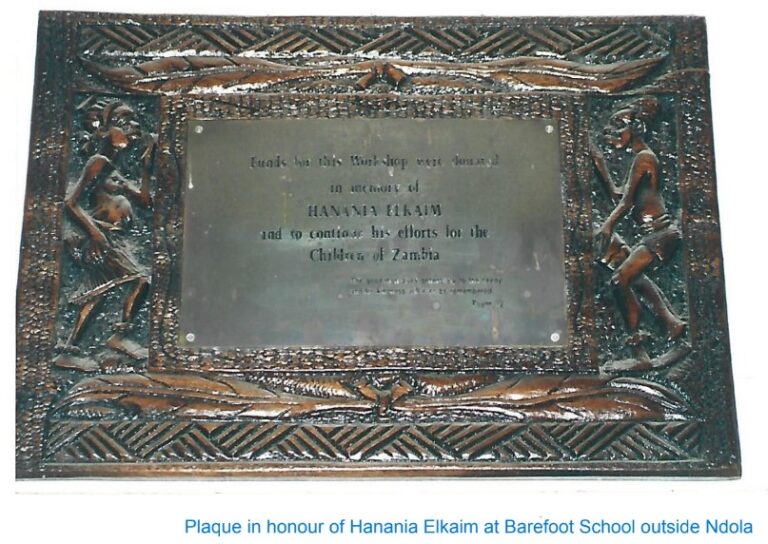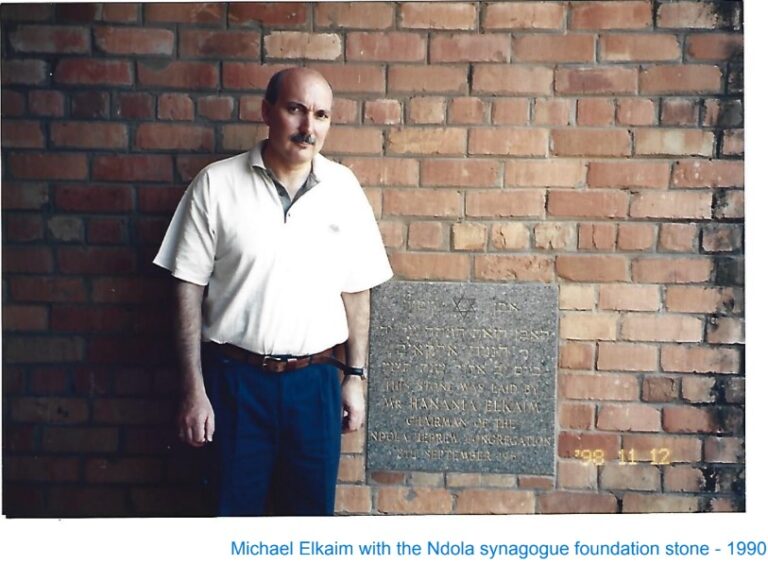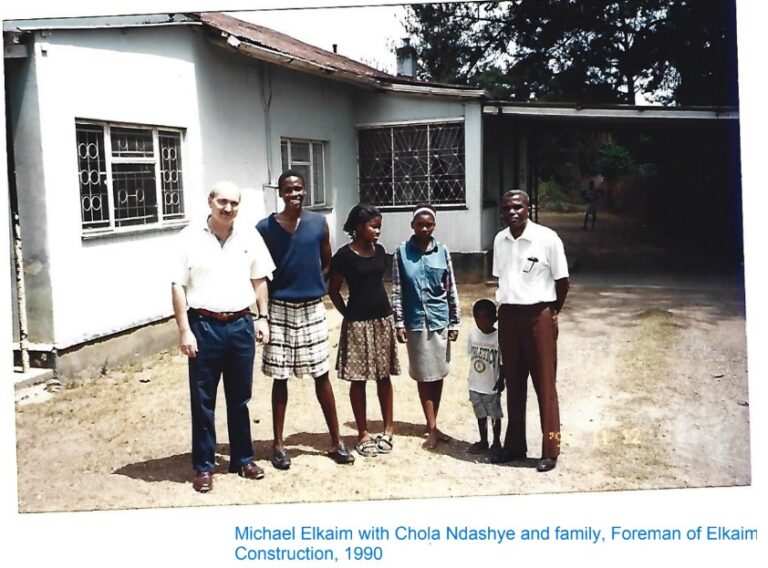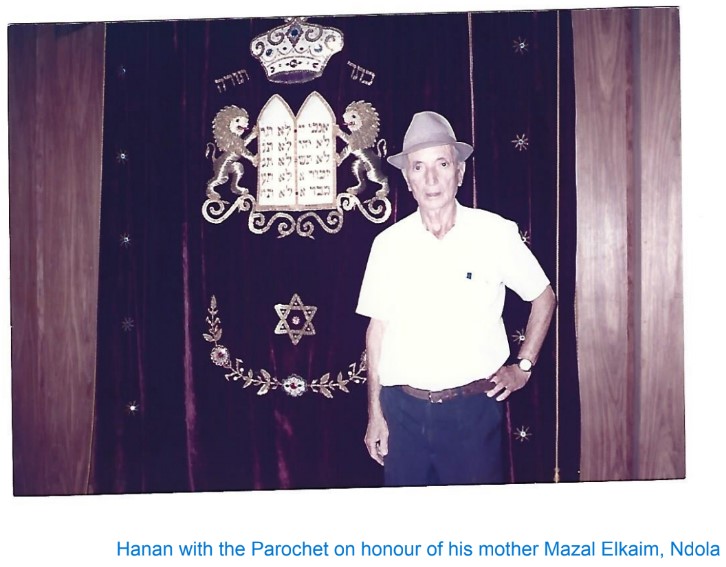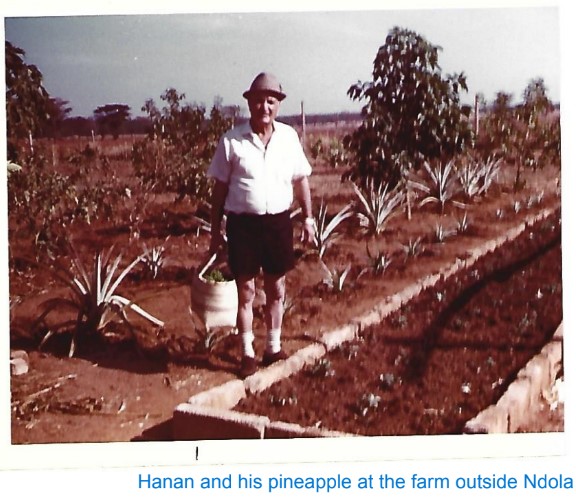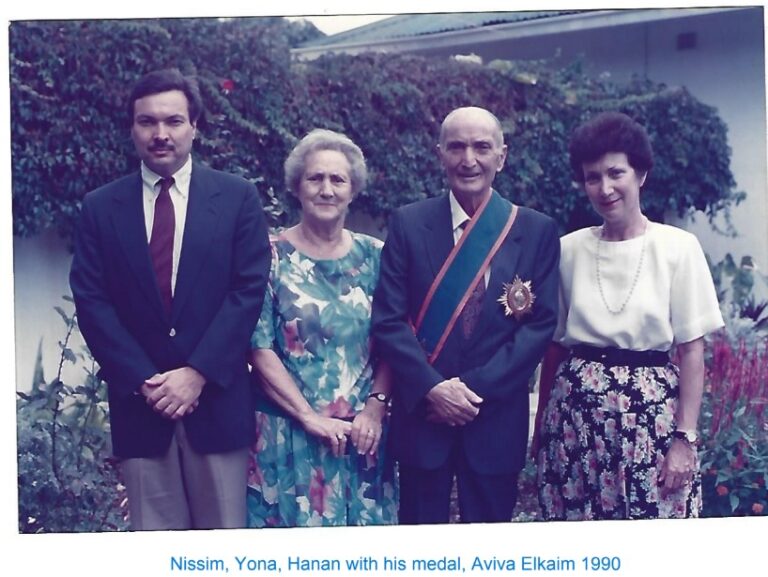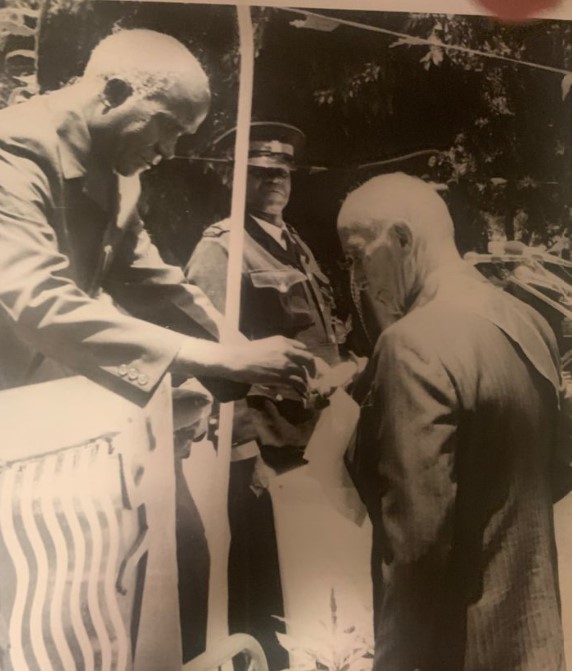
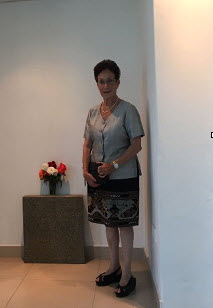
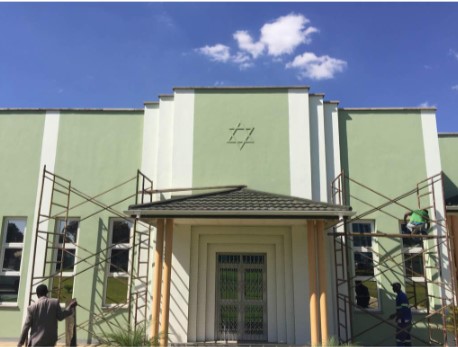
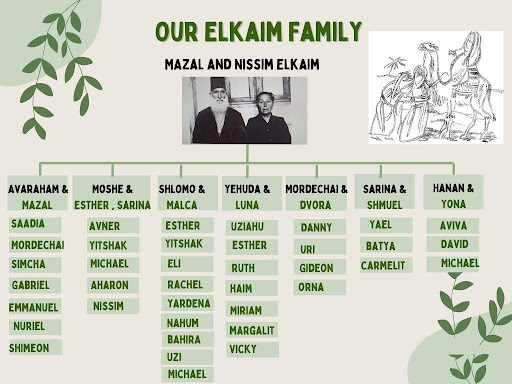
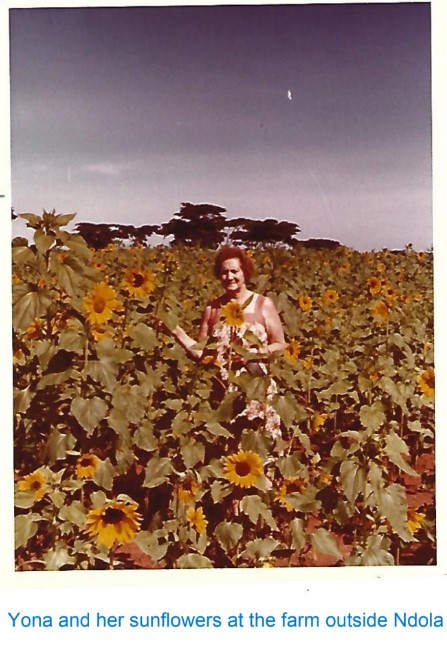
The Elkaim Family Saga
contributed by Aviva Elkaim Ron – April 2024
The Elkaim Family settled in Marrakesh, Morocco after expulsion from Corcos in Spain. The first records are of the family in Marrakesh are of David Elkaim in 1670, followed by Nissim, Mordechai, Abraham, Azuz
(who was the last to serve in the Court of the King of Morocco) and Moshe. In 1856, Moshe and his wife Esther, with their 6 children, sailed to Jaffa. The youngest son was Nissim, my grandfather, who was two
years old when they left Morocco to settle in the Holy Land.
In 1885, K.Z. Wissotsky (yes, the tea importer Wissotsky) established the Hovevei Zion movement. One of their aims was to strengthen the small Jewish populations in towns with large Arab populations, such as Acre,
Lydda, Ramle and Gaza. Nissim Elkaim agreed to go to Gaza in 1889 with his family and 6 of his seven children were born in Gaza. My father Hanania was the youngest, born in Gaza in 1913. Nissim had married
Mazal (Massouda) Shimul (second cousin of Herbert Samuel), who was born in Mazal Dagim Street in Jaffa, from a family who had come to Jaffa from Alexandia in Egypt after many generations in Tangier, Morocco.
Two of Nissim’s brothers were sent to Lydda and to Aleppo in Syria.
Chacham Nissim Elkaim established a successful building materials business in Gaza, and was declared Muchtar. In 1916 he heard that 16 Jews had been killed in a bomb blast on the train from Damascus to
Alexandria and he set off by camel to purchase land for a cemetery to bury them. He also purchased some land for the family which was ultimately sold in 1961. Nissim Elkaim was on very good terms with the
Mayor A-Shawa, who warned him about the imminent killing of Jews in Arab towns in 1929. The Mayor, the Jewish wife of the British Major and Nissim Elkaim gathered all the 200 Jews in Gaza, and got them to safety
by train, to the old railway station in Tel Aviv. No-one was hurt but the family lost all its property and possessions. Nissim and Mazal settled in Jerusalem and became dependent on their children. Hanania had to stop
his schooling after one year at Terra Santa College in Jerusalem and then worked on construction to help his parents.
Nissim’s eldest son, Abraham, Muchtar of Schunat Hatikvah in Tel Aviv was later sent to serve as the administrator of Beer-Sheva. In 1952, Abraham was killed by fedayeen. In 1956, Nissim’s son Mordechai
Elkayam was appointed military governor of Gaza and remained there for several months. He later wrote a book “40 Years of the Jewish settlement in Gaza, Beersheba and the establishment of Ruchama”. While he working on the road to Afula, Kvish Hasargel, Hanan, shortened from Hanania, ia he visited his brother Yehuda who lived in Binyamina. Yehuda’s wife was Luna Cohen, sister of Ephraim (Effie) Cohen (the Gad Dairy Cohen family still operating today), who had gone from Palestine to Bulawayo in Southern Rhodesia some years before and had a pharmacy there. Effie visited his sister while my father was there and gave his sister his shoes to polish. In answer to my father’s criticism about this, Effie explained that he had got used to someone else cleaning his shoes in Africa. He then advised my father to help his parents by working in Africa.
So in 1938, my father, who really didn’t like cleaning his shoes, got on the boat to Beira, Mozambique. Effie Cohen advised him to make his way to Bulawayo but he didn’t have the 50 Pounds Sterling to get off the boat. A road contractor Chisolm Jack, looking for semi-skilled workers from the Mediterranean, paid the 50 Pounds for him to get off the boat, which made him indebted to work for Mr Jack for 4 years. He was right away taken by train to Mufulira, and worked on the roads between towns on the Copperbelt.
In March 1942, Mr Jack told him he needed a wife – after several bouts of malaria and black water fever and living in the bush. My father explained that he had promised his mother he would marry a Jewess, and promised his father he would not smoke on Shabbat. He got two weeks off to find a wife and took the train to Bulawayo to seek Effie’s help. Effie’s wife Goldie (Margolis) had an unmarried cousin, and was advised to visit this lady with a bunch of flowers. He went, left the flowers on the doorstep and went to the railway station to get to Harare (Salisbury), where he had a friend from Jerusalem. He chatted up a lady, Yona Waldman, also waiting for the train. She was transiting from Johannesburg, on the way to help her sister who had just had a second baby. When they got off the train, the brother-in-law was waiting, and he turned out to be the friend from Jerusalem, Nissim Ben-Yehuda. That was Thursday, Yona did help with the baby for 3 days, and they were married on Sunday, 19 th March, 1942, in a dress made by Yona’s sister, Haya (Honey) who was a skilled dressmaker.
Honey had come to Johannesburg from Lithuania in 1934 with their father, and their mother and two more sisters followed in in 1936. The newly-weds went straight up to Mufulira by train to be back within the two weeks. Their first child was born on 14 th December 1942. My father was looking forward to a son so he could name the baby Nissim, as his father had died three months before I was born. He settled for Aviva, or Avi-ba, as indeed there was no spring season in Zambia. The family then moved to Lumumbashi (Elizabethville) in the Congo where Chisolm Jack’s company built the airstrip for the military airport.
After the airstrip was finished, my father decided he did not want to continue with spending a lot of time in the bush, and then settled in Ndola in 1944. He started a sweet factory on Vitanda Street and the family lived in the adjacent army barracks. In early 1946, my father bought out Chisholm Jack’s road construction company and started on his own as Elkaim Construction, which he held on to till 1990. His first contract was to tarmac Broadway, which was finished the day his son Nissim was born, 14 th October 1946. In 1952, he built a proper house (inside kitchen and toilet) and the family moved to Main Street, now Dr Damie Street, before a second son, Michael, was born that year. Nissim, now called David, lives in Maryland, USA and still works as a civil engineer. Michael is in Australia, and is a very well-respected Supreme Court Judge in Sydney.
Hanan Elkaim was known for his support to all religious institutions, never charged for driveways and tennis courts at religious schools, and for his friendship with people from all populations. He was a devoted
Mason and Rotarian. With his wife Yona, the family was known for its open house to all. He was a strong supporter of Independence and was later recognized as a Freedom Fighter, and awarded the Distinguished
Service Order, First Division on the 26 th Anniversary of Zambian Independence in 1990. He passed away in May 1991 and is buried in the Warren Hills cemetery in Harare. A year later, we brought my mother to
live in Israel, in the apartment they had bought in Ramat Hasharon some years before.
The Ndola synagogue, on Broadway, was built in 1956 by Hanania Elkaim, who was a road and building constructor. Most Friday nights, Ndola synagogue had a quorum of 10 men to hold the Sabbath eve service. Most of Jewish congregation in Ndola, with about 40 families at its peak, were refugees who appreciated the haven that Zambia gave them. Many of them understood the yearning for independence.
As the number of Jewish families dwindled after Independence, the managers of hotels would phone Elkaim to let him know there was a guest with a Jewish name. The guest was questioned and if he consented, he was collected for the Sabbath service and then dinner in the Elkaim home. This went on till the mid-1980’s. Then he agreed to let Seventh Day Adventists use the hall for their services on Saturdays while the Baptists used the hall on Sundays. This carried on till the synagogue was sold in 1990 to the Catholics next door, with a lot of
contesting by the Seventh Day Adventists and Baptists.
Two conditions in the sale of the Ndola synagogue to the Catholic Diocese next door were to keep the Magen David and the foundation stone on the building. Through negotiations with Bishop Banda, now
Archbishop of Zambia, we finally managed to get the Magen David back in 2018 after renovation of the synagogue and adjacent community hall. The complex is now the Catholic Diocese Convention Centre. If you look at the two parts of the building, you will see 12 windows in each part, symbolizing the Twelve Tribes of the Israelites. The original foundation stone is in the meeting hall, in the niche which had the Torah. This Sefer
Torah is now in the synagogue in Ramat Hasharon, brough by the Israeli ambassador in 1992.
In 1953, Hanan Elkaim brought his nephew Avner from Israel to Northern Rhodesia. About a year later, Habonim movement decided the Jewish kids on the Copperbelt needed a few days of camp, and sent a
madricha from Bulawayo. She was Ronnie (Rachel) Furmanovsky, whom you all know now as Ronnie Elkaim as she and Avner married after a short courtship by postal mail, and Avner moved to Bulawayo. There
they did well with a clothing factory. Some years later, my father brought Avner’s brother Yitzhak to Ndola. He too moved to Bulawayo, and married Audrey Marks. We gratefully remain with Ronnie who now
lives in Achuzat Poleg in Israel.
Additional information on the Jews of Gaza can be found via these links:
https://youtu.be/ytwG1chu01U?si=gskVbhpg7Bp-WpyC
https://www.jewishvirtuallibrary.org/history-of-jewish-settlements-in-gaza
https://en.wikipedia.org/wiki/History_of_the_Jews_in_Gaza_City
